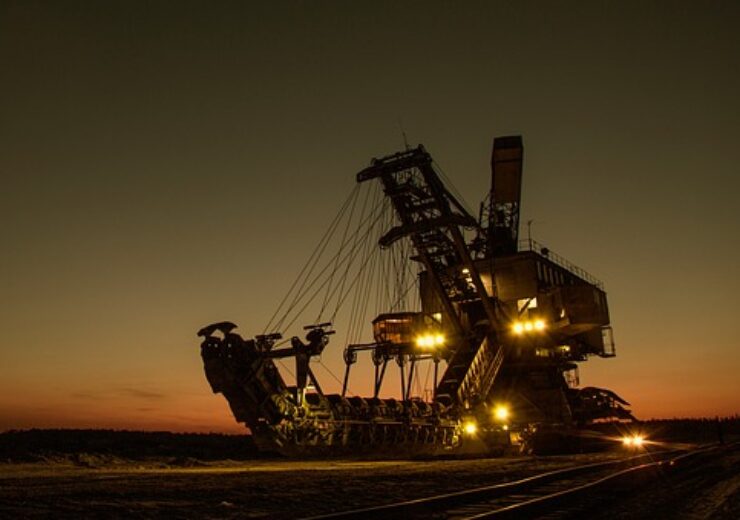Hudbay has received data regarding approximately 60,000 metres of historical drilling that was completed on the Cook Lake properties between 1971 and 2012

Hudbay Announces Potential for Mine Life Extension in Snow Lake. (Credit: Khusen Rustamov from Pixabay)
Hudbay Minerals Inc. (“Hudbay” or the “company”) (TSX, NYSE: HBM) releases positive results from the company’s 2023 winter drill program near its Lalor mine in Snow Lake, Manitoba, and announces the significant consolidation of land in the Snow Lake region through several strategic transactions. The agreements with multiple land holders will increase Hudbay’s holdings in the Snow Lake region by more than 250% to a total of 2,690 square-kilometres. The drilling results and the regional land acquisitions provide the potential for mine life extension at Hudbay’s Snow Lake operations beyond 2038.
Peter Kukielski, the company’s President and Chief Executive Officer, comments, “Since the start-up of Lalor in 2014, much of our focus has been on in-mine resource conversion, where we have had tremendous success adding over two million ounces of additional high-grade gold reserves. In our first step-out and down-plunge drill program since the initial discovery of the gold and copper-gold lenses at Lalor more than a decade ago, the results demonstrate the potential to replicate our exploration success through the discovery of additional high-grade zones that could enhance near-term production and further extend mine life. We are also consolidating our land package in the prospective Snow Lake Greenstone Belt, where we have more than tripled our land holdings to provide further opportunity for the discovery of new deposits to unlock meaningful long-term value at our Snow Lake operations.”
Lalor New Mineralized Zones – Near-term Production Growth Potential
Hudbay’s 2023 winter drill program in Snow Lake included exploration near the Lalor mine with one drill rig testing a geophysical anomaly located northwest of Lalor, within 500 metres of existing underground infrastructure (please refer to Figure 1 at the end of this news release). The geophysical anomaly was initially tested in 2022 with the intersection of significant widths of silver mineralization, as seen in hole LX0188, which was drilled from the closest underground platform at an unfavorable angle, and hole CH2206. Silver is the most mobile metal in a volcanogenic massive sulphide (“VMS”) system and can indicate the immediate proximity of more significant base metal mineralization when encountered in significant quantity in isolation from the other metals. In 2023, four follow-up drill holes were completed with all holes intersecting an alteration zone that is known to host the Lalor mineralization. Holes CH2202, CH2302 and CH2303 also intersected several sulphide horizons with both zinc and copper-gold-silver mineralization. Full details on the assays received to-date can be found in Table 1 located towards the end of this news release and highlights include:
Hole CH2302 intersected three mineralized zones, including 7.0 metres of 3.06% zinc and 15.1 grams per tonne silver; 3.5 metres of 3.81% copper, 3.75 grams per tonne gold and 104.5 grams per tonne silver; and 7.5 metres of 3.87% zinc and 7.5 grams per tonne silver
Hole LX0188 intersected 13.0 metres of 13.0 grams per tonne silver
Hole CH2206 intersected 9.9 metres of 18.9 grams per tonne silver and 1.49% zinc, and 3.8 metres of 9.7 grams per tonne silver and 4.30% zinc
Hole CH2303 intersected 9.7 metres of 106 grams per tonne silver and 6.4 metres of 11.7 grams per tonne silver and 2.7% zinc
In addition, recent borehole electromagnetic surveys have identified multiple conductive horizons and Hudbay is in the process of generating targets and a plan for the next drilling campaign. Given the close proximity of these intersections to the existing Lalor underground infrastructure, the mineralization in this area has the potential to further enhance the near-term mine plan for Lalor pending additional drilling and positive feasibility studies.
Hudbay’s 2023 winter drill program in Snow Lake also included four drill rigs testing the down-plunge copper-gold extensions of the Lalor deposit, in the first drilling in the deeper zones at Lalor since the initial discovery of the copper-gold zones in 2009 and 2010. This initial campaign consisted of eight widely spaced drill holes over a distance of two kilometres, as shown in Figure 2. Seven of the drill holes reached their planned minimum depth of 1,500 metres prior to the spring thaw that necessitated an early end of the program. All holes intersected the zone of strong alteration known to host the Lalor mineralization and have shown many occurrences of disseminated copper sulfides indicating the potential close proximity of one or more higher grade copper-gold feeder zones similar to Lens 27 currently in production at Lalor. Furthermore, two of the holes have shown better mineral endowment with three intercepts of a minimum of five metres of copper mineralization, as shown in Table 2. The lack of gold associated with the copper mineralization suggests that drilling has yet to intersect the core of the mineralized system. These initial results from widely spaced drilling are a very encouraging indication that the rocks hosting the rich copper-gold mineralization at Lalor continue down-plunge as predicted by Hudbay’s geological models.
Source: Company Press Release
